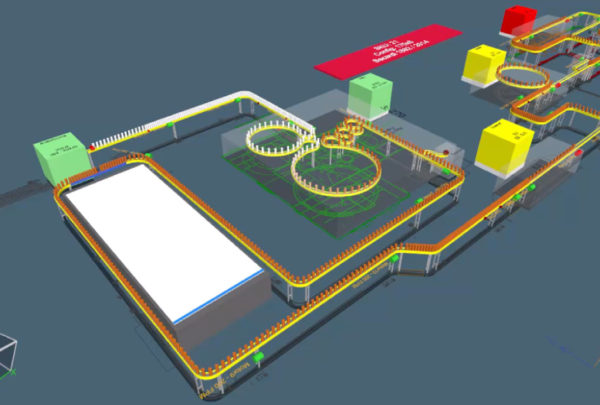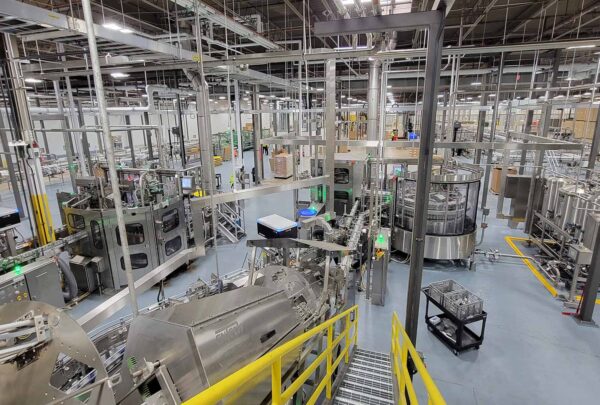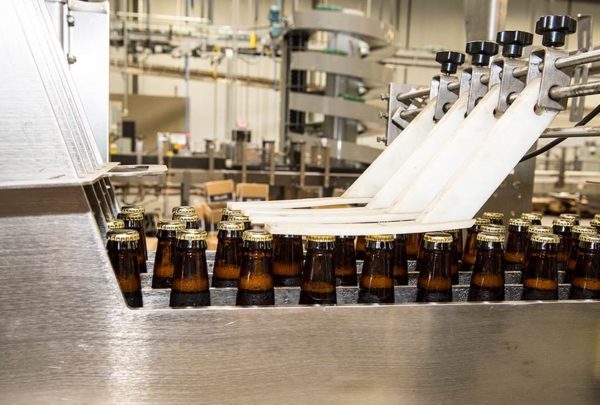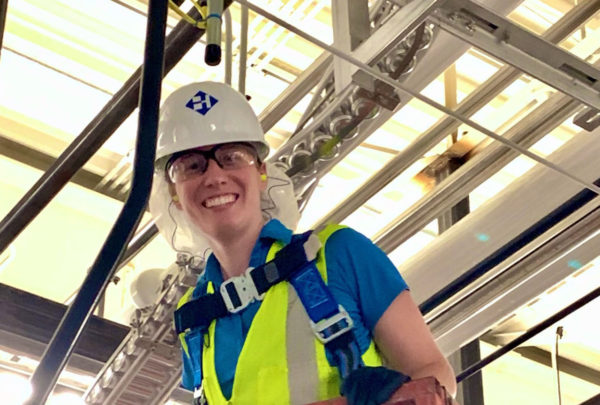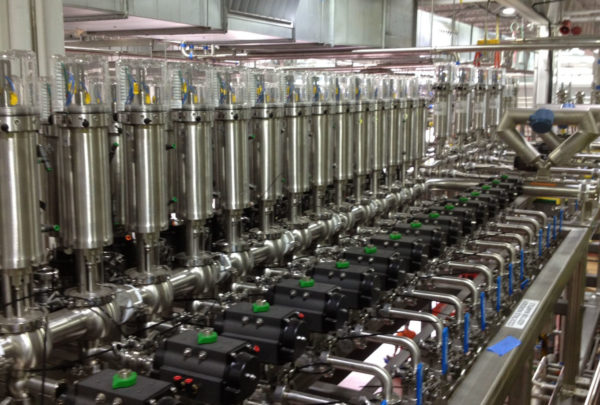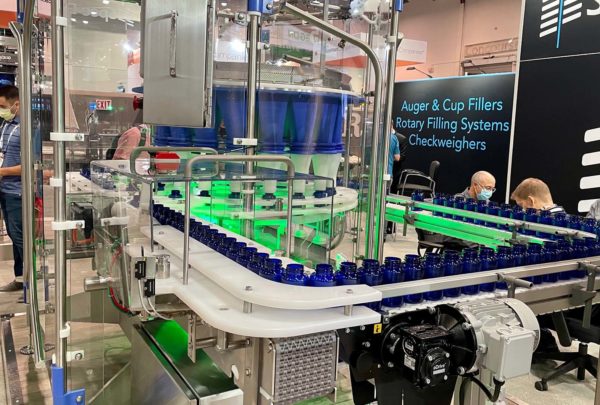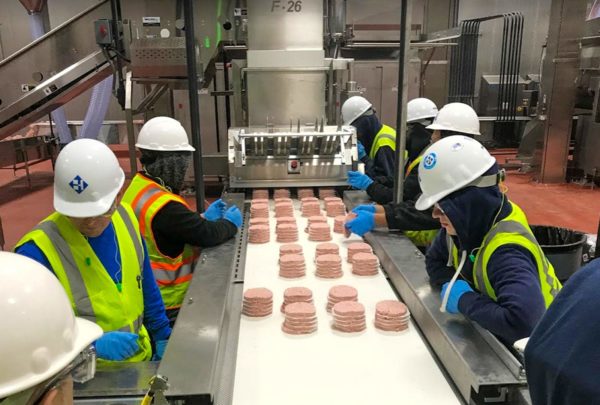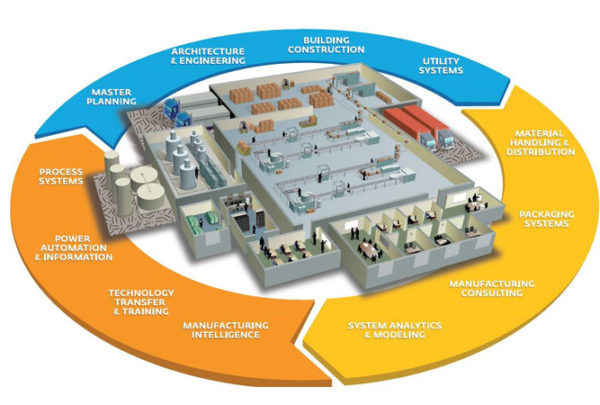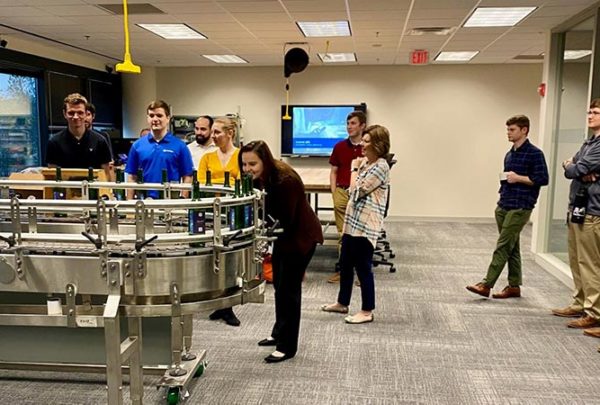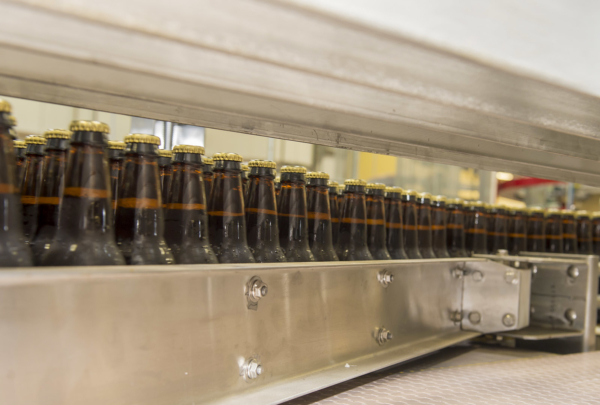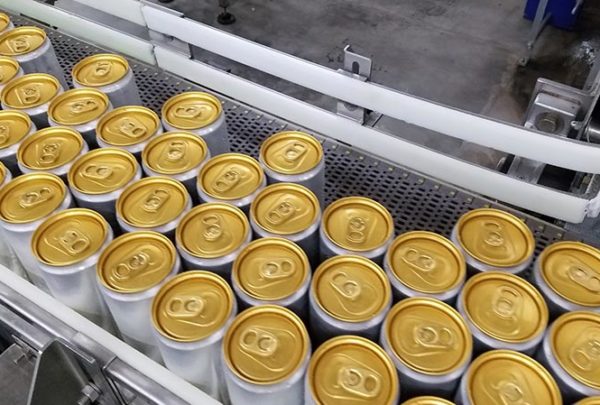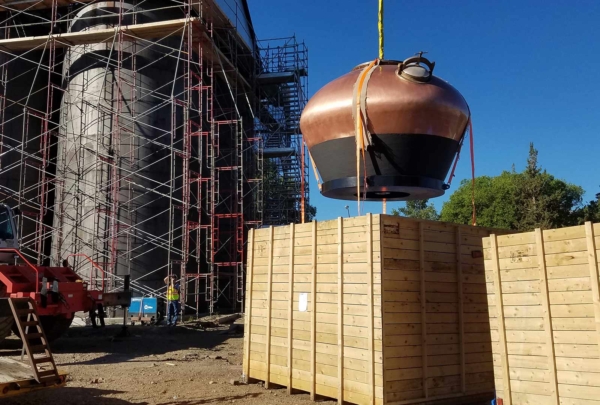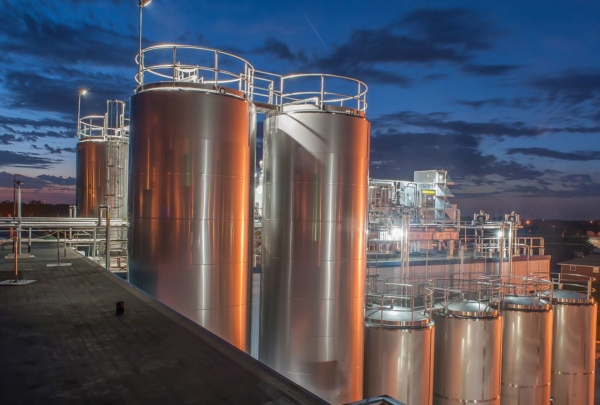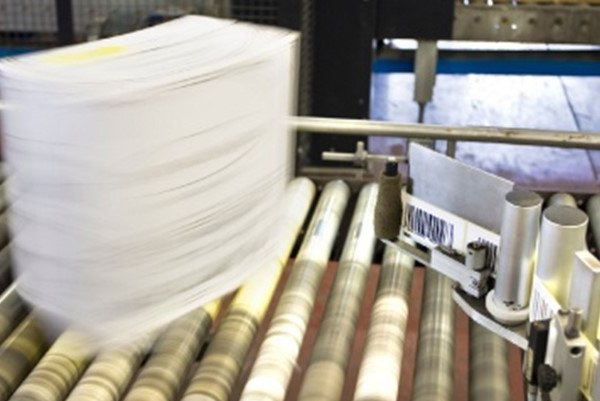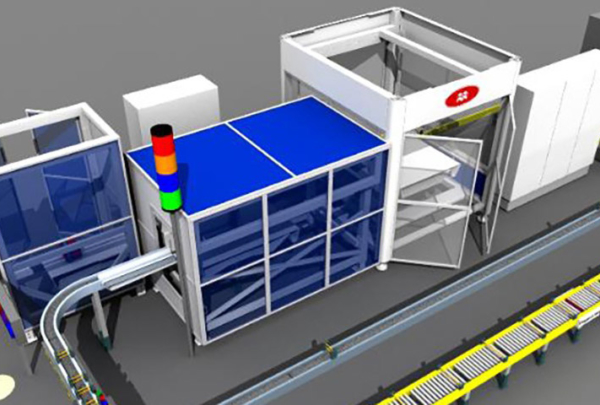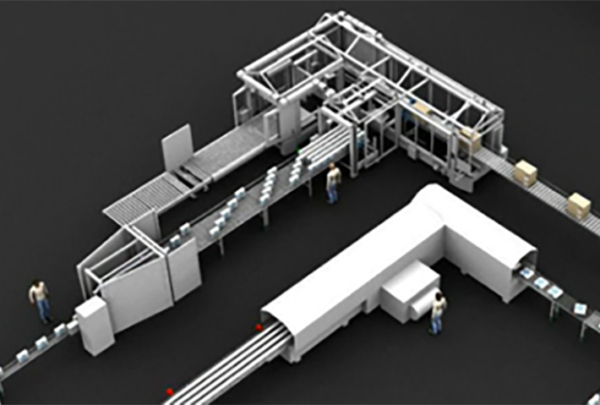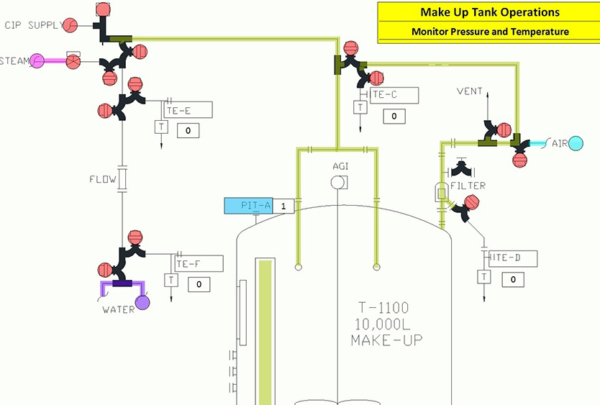A client came to us with a familiar problem: Their bottling line was fraught with multiple efficiency and quality problems.
The line, which included a new packer and sealer with associated empty-carton, full-carton and full-bottle conveyor systems, produced numerous issues that the original integrator was unable to resolve:
- Full-bottle breakage because of excessive line pressure
- Inadequate empty-case supply resulting in frequent packer micro-stops
- Empty-case system jams at curves
- Jams at the discharge of the case sealer
Haskell’s packaging automation team investigated each of the issues and, within two days, turned over a system that was balanced and jam-free. The following is a summary of the steps taken for each problem area.
 Bottle Breakage
Bottle Breakage
The Haskell team employed our core conveyor control strategy and recalculated the conveyor speeds based on the bottle sizes and conveyor width to derive desired speeds in bottles per minute. Once this was complete, the packer and bottle conveyor speeds were modified to follow each other based on the status of the packer infeed sensors (Low, Medium and High). With a proper bottle-per-minute relationship established between the packer and the bottle conveyor, bottle pressure was eliminated and the packer was able to maintain steady-state operation rather than varying speeds and occasionally stopping because of to low bottle prime.
Empty Case Supply and Jams
Due to long, non-accumulating sections of conveyor prior to the packer, the empty-case system was not supplying a steady flow of empty cases to the packer, resulting in frequent low-prime situations. In an attempt to resolve the issue, the original turnkey supplier added an accumulation mode to help close gaps, but this action instead increased case pressure at the curves and created case jams. As a result, the accumulation mode was disabled, leaving the system unable to adequately supply empty cases to the packer.
To solve the issue, Haskell’s team once again relied on the basics. We recalculated the conveyor speeds based on the length of the case and the desired speed of the packer. Once the conveyor speeds were established, the conveyor logic was modified to follow the speed of the packer rather than relying on the preset speeds previously used.
To manage the issue of gaps, the conveyor logic was modified to accumulate further upstream and properly meter cases through the curve instead of trying to accumulate through the curve. When larger-than-expected gaps were detected on non-accumulating conveyors, the conveyor speeds would modulate to close the gap. By the time the cases were on the last non-accumulating conveyor, a large decline belt, there was a consistent flow of cases heading to the packer, which eliminated the frequent low prime issue.
Sealer Jams
When downstream issues caused the case sealer to stop, cases would jam at the sealer discharge. After investigating, the team determined that there was not enough physical space to properly run out the sealer. Stopping the sealer in place was not an option, because doing so would result in cases not sealing properly and frequent stops due to open flaps.
To resolve the issue, the team recalculated the conveyor speeds based on the length of the case and the desired bottles-per-minute speed of the sealer. Once this relationship was in place, the team calculated and implemented the space and conveyor speeds necessary to create the physical space required to run out the sealer.
Summary
By employing the basics of relating product sizes to conveyor speeds, Haskell can improve a system that isn’t operating as expected. This method can also be used to optimize systems that are layout constrained. Following these methods takes the guesswork out of line control and results in a system that runs reliably with minimal product loss or damage.
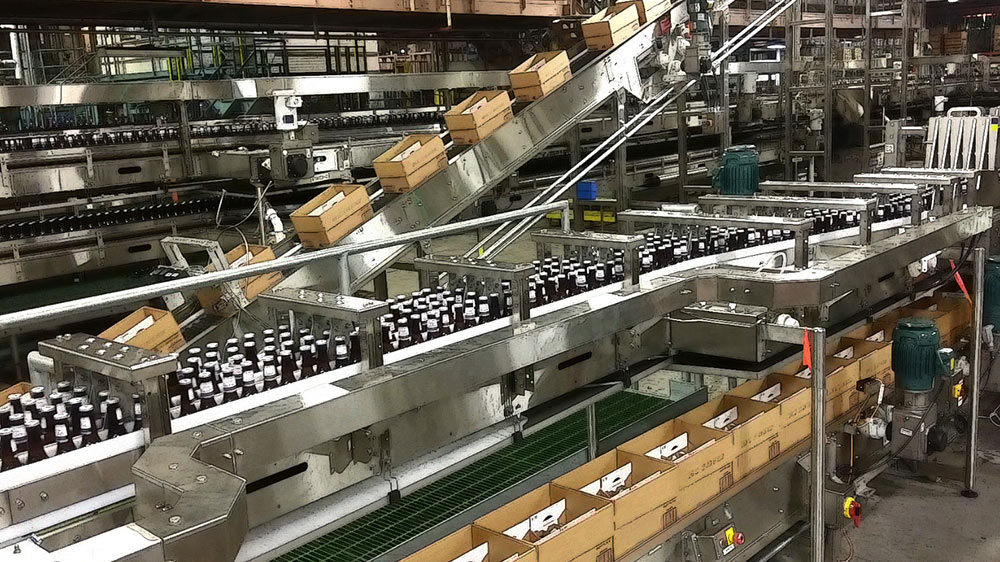
 Bottle Breakage
Bottle Breakage


